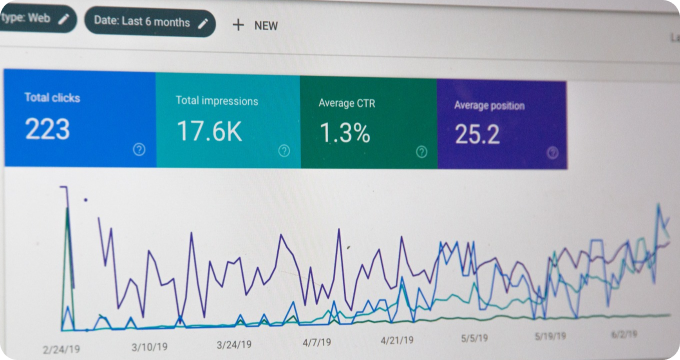Legal Discovery Software Industry Report: Unveiling Key Findings and Crucial Insights
- December 15, 2023
- 2 minutes
The legal discovery process, a critical component of any litigation, comprises procedures by which parties involved in a dispute exchange sought-after information that is relevant to their case. From a technological standpoint, the pivotal role that Legal Discovery Software plays in this process is profoundly significant. This software is designed to facilitate the discovery process by assisting in the identification, collection, preservation, processing, review, and production of electronic evidence. Technological advancements, digitalization, and the ever-increasing volumes of digital data have transformed the legal discovery software industry into an expansive landscape that is continually evolving.
As we dive into the strategic intricacies and nuances of the legal discovery software industry, it would be prudent to frame our discussions around the Electronic Discovery Reference Model (EDRM). EDRM has become the de facto standard that outlines the steps involved in the e-Discovery process. These steps—Information Management, Identification, Preservation, Collection, Processing, Review, Analysis, Production, and Presentation—are the pillars upon which discovery software solutions are modeled, each possessing its unique relevance and challenges.
The Information Management phase, for example, involves the proactive management of data before litigation arises. It dictates the need for software solutions that offer robust data management capabilities. On the other hand, the Identification phase necessitates advanced searching capabilities to locate potentially relevant data sources. The Preservation and Collection phases call for tools that can securely preserve identified data in its original form and collect it in a legally defensible manner. Processing, Review, and Analysis necessitate solutions that can convert collected data into usable formats, facilitate efficient document review, and provide analytical capabilities to uncover patterns, trends, and relationships within the data. Finally, the Production and Presentation phases require tools that ensure data is presented in an appropriate format and compelling manner to make a persuasive case.
While vertically integrated software solutions that cover all EDRM stages exist, specialized tools that cater to specific stages are equally prevalent. The trade-off is between comprehensive coverage and specialized efficiency. Comprehensive solutions offer the convenience of a one-stop-shop but might fall short on the depth of capabilities, while specialized tools offer deeper capabilities for specific phases but necessitate the use of multiple tools.
Moreover, the exponential increase in data volume and variety has given rise to complex data types, such as social media, cloud data, and encrypted data, that present unique challenges. Traditional keyword search methods are proving to be inadequate, leading to the rise of machine learning and artificial intelligence technologies in discovery software. These technologies are revolutionizing data identification and review processes by enhancing accuracy and reducing manual effort. However, they also raise concerns of algorithmic bias and transparency, warranting careful consideration.
The global landscape of legal discovery software is geographically diverse, with the North American region accounting for the largest market share, owing primarily to its advanced IT infrastructure and the prevalence of litigations. Europe, Asia-Pacific, and other regions, while smaller in comparison, are experiencing rapid growth, driven by increasing digitalization, stringent regulations, and the growing awareness and adoption of legal technology.
In the temporal dimension, the legal discovery software market has witnessed a substantial growth rate in the last decade, a trend that is projected to continue in the foreseeable future. A Technavio report predicts the market to grow by USD 1.2 billion during 2020-2024, progressing at a CAGR of over 10%.
From an economic perspective, the value proposition of legal discovery software is undeniable. According to a 2017 study by Norton Rose Fulbright, corporations spend an average of $1.5 million on litigation annually, with discovery costs accounting for up to 50% of total litigation costs. The right discovery software can dramatically reduce these costs by enhancing efficiency and accuracy, thus offering significant ROI.
To summarize, the legal discovery software industry, rooted in the complex interplay of technological advancement, legal pertinence, economic pragmatism, and regulatory compliance, presents a fascinating study. Its constant evolution and the challenges it poses call for continual exploration, understanding, and innovation. This industry report aims to contribute to that ongoing discourse by unveiling key findings and crucial insights into the legal discovery software landscape.
Learn More
Unleash the power of knowledge and stay ahead of the curve by diving deeper into our insightful blog posts about legal discovery software. For an unbiased, comprehensive view, they are encouraged to explore our meticulously curated rankings of the Best Legal Discovery Software.
Popular Posts
-
 10 Compelling Reasons Why Your Law Firm Needs Legal Discovery Software
10 Compelling Reasons Why Your Law Firm Needs Legal Discovery Software
-
 Debunking the Top 10 Myths About Legal Discovery Software
Debunking the Top 10 Myths About Legal Discovery Software
-
 8 Things I Wish I'd Known About Legal Discovery Software Before Implementing It
8 Things I Wish I'd Known About Legal Discovery Software Before Implementing It
-
 What are Legal Discovery Software Solutions and How Do They Work?
What are Legal Discovery Software Solutions and How Do They Work?
-
 Ask These Questions to a Legal Discovery Software Provider to Choose the Right One for You
Ask These Questions to a Legal Discovery Software Provider to Choose the Right One for You






